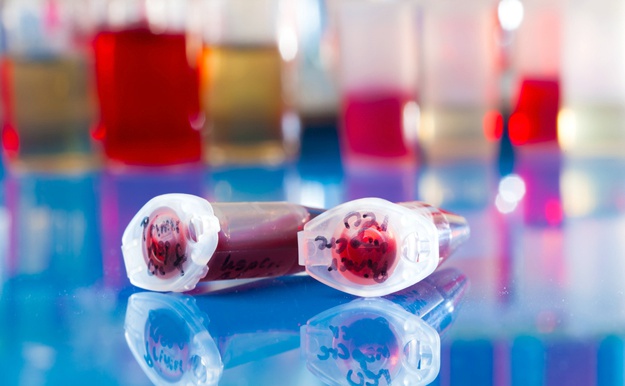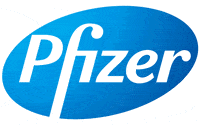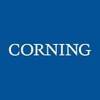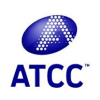|
|
According to the National Institute of Neurological Disorders and Stroke, 80% of Americans will have at least one episode of lower (or lumbar) back pain in their lifetimes. Discomfort or pain in the cervical and thoracic regions is common as well, with an estimated one-third of Americans living with pain at any given time. For much of human history, back pain treatment consisted of home remedies, massage, cold and heat therapies, and rest – but not much more.
In this article:
- An Introduction to Stem Cell Therapy for Back Pain
- How Do Stem Cells Heal the Body?
- How Does Stem Cell Treatment for Low Back Pain Work?
- Does Stem Cell Treatment Work for Back Pain?
- Regenexx’s Back Pain Treatment
- How Far Away Is an Approved Stem Cell Treatment for Back Pain?
Using Stem Cells for Back Pain Treatment
Could stem cells potentially represent a paradigm shift for back pain treatment? Research is in the early stages, but the outlook seems promising.
An Introduction to Stem Cell Therapy for Back Pain
In recent years, surgery and chiropractic care have stepped into the fray, but they are reactive measures, capable only of responding to pain as it arises and having only limited success with permanent healing. Even ongoing massage and chiropractic adjustment fail to solve the problem long-term, and care providers must continue them to maintain their positive benefits.
Enter stem cell therapy for back pain, which could introduce a wholly new approach to back pain treatment. No longer must sufferers rely on stopgap measures or ongoing treatments. Potentially, patients could experience long-term relief.
How Do Stem Cells Heal the Body?

Stem cell treatments are one of the most exciting developments of the 20th and 21st centuries. A stem cell is an undifferentiated cell that can transform into many types of tissue. Many stem cells have the ability to turn into one specific set of tissues (say, blood cells or muscle cells), while others can turn into any cell in the human body.
This matters, because while many of our cells are renewable, this isn’t true for all. Some cells – such as nerve or cartilage – are not. Humans are born with as many as they will ever have, meaning that when they wear out or break down, the body is unable to heal that tissue. Many types of back pain stem from a breakdown in joint tissue, and since that tissue does not regenerate, this is where chronic lower back pain enters the picture. While physicians and other wellness providers can certainly help manage it, many people simply cannot heal all the way.
Enter stem cell treatment for lower back pain.
How Does Stem Cell Treatment for Low Back Pain Work?
Unlike other types of back pain treatment, stem cell procedures are not of the reactive kind. That is, they do not simply manage the pain, but rather give the body ingredients to rebuild itself.
The method by which physicians help people heal from back pain is relatively simple, if not easy. Physicians first remove fat tissue via liposuction, then separate out stem cells. These adipose-derived stem cells are undifferentiated, containing the information needed to transform into cells needed by the back to stop hurting and start healing.
Some physicians also use populations of stem cells that can be extracted from adult bone marrow.
Physicians then inject the prepared stem cells into the lower, middle, or upper back regions. By mechanisms scientists are still seeking to understand, those stem cells enter the body and – depending on their environment and the growth factors with which physicians also inject the body – intuitively transform into the missing and needed cells. In the case of back pain treatment, this may mean rebuilding nerves, muscles, and especially joint tissue.
Does Stem Cell Treatment Work for Back Pain?

According to golfing legend Jack Nicklaus, who suffered through sometimes acute back pain through much of his career, the treatment is effective. Having tried numerous other methods – including cortisone shots, known to provide temporary relief from back pain that other approaches can’t effectively address – he assures the public that stem cell treatment for lower back pain is a practical option.
However, this form of therapy has not yet received Food and Drug Administration (FDA) approval, and clinical trials have not yet provided the conclusive evidence needed to earn that approval. It’s impossible to say at this point how effective the surgery may prove for wide cross-sections of the population.
How Far Away Is an FDA Approved Stem Cell Treatment for Back Pain?
This is a hard question to answer. In order to approve a new therapy, researchers must first launch clinical trials. Some are a few years old at this point, while others are still in their earliest phases.
Typically, it takes the FDA around a decade to approve a drug, that time span stretching from the inaugural phases of its development through to final approval. It may take more or less time to approve a surgery or other therapy.
Once clinical trials prove effective, researchers must then try them on wider cross-sections of the population. Again, once they prove effective on a wide scale, the FDA will offer approval. Then it takes time for the treatment to penetrate the market and build to such proportions that there are enough service providers for anyone who would like the treatment.
In the short term, it’s likely that the worst cases will receive entrance into clinical trials. From there, more widespread efforts will accommodate those with less dire cases of back pain. The procedure will progress through the ranks until ultimately it is widely available to all.
While we wait for large-scale FDA approvals, there are several skilled physician groups who offer stem cell treatments for back pain directly to patients, as described below.
Back Pain Treatments from Regenexx
Headquartered in Denver, CO, Regenexx is a stem cell group that offers stem cell treatments to patients with orthopedic conditions, including those with back pain.
The Regenexx® technology involves a procedure in which a bone marrow sample is extracted through a needle and a blood is drawn from a patient’s arm. These collections are then processed in a lab. Shortly thereafter, the cells are injected back into the patient at the site of injury. Regenexx is a leader in resolving chronic back pain, specializing in the orthopedic applications of stem cells since 2005.
Back Pain Treatments from GIOSTAR
GIOSTAR, a global stem cell company that has also treated a large number of patients experiencing acute and chronic back pain.
To resolve back pain, GIOSTAR extracts a patient’s regenerative cells and injects them back at the site of injury or damage. In addition to promoting repair , the procedure can reduce inflammation, relieve pain, and restore healthy tissue function. In some cases, GIOSTAR also leverages platelet-rich plasma (PRP). This approach enables growth factors in your blood to reduce inflammation and promote with a healthy repair response.
Interestingly, the pioneering research of GIOSTAR’s Founder, Dr. Srivastava, led to the first FDA approved human clinical trial for Spinal Cord Injury (SCI) in 2007. It was conducted at the University of California Irvine in collaboration with the Christopher and Dana Reeve Foundation.
In alignment with what we believe, GIOSTAR’s goal is to offer cutting-edge, extensively researched stem cell therapy options designed to rejuvenate and improve a patient’s quality of life. Click here to Schedule a Consultation or ask GIOSTAR a question about how stem cell therapy could help you.
If you found this article valuable, subscribe to BioInformant’s stem cell industry updates.



















Tell Us What You Think!